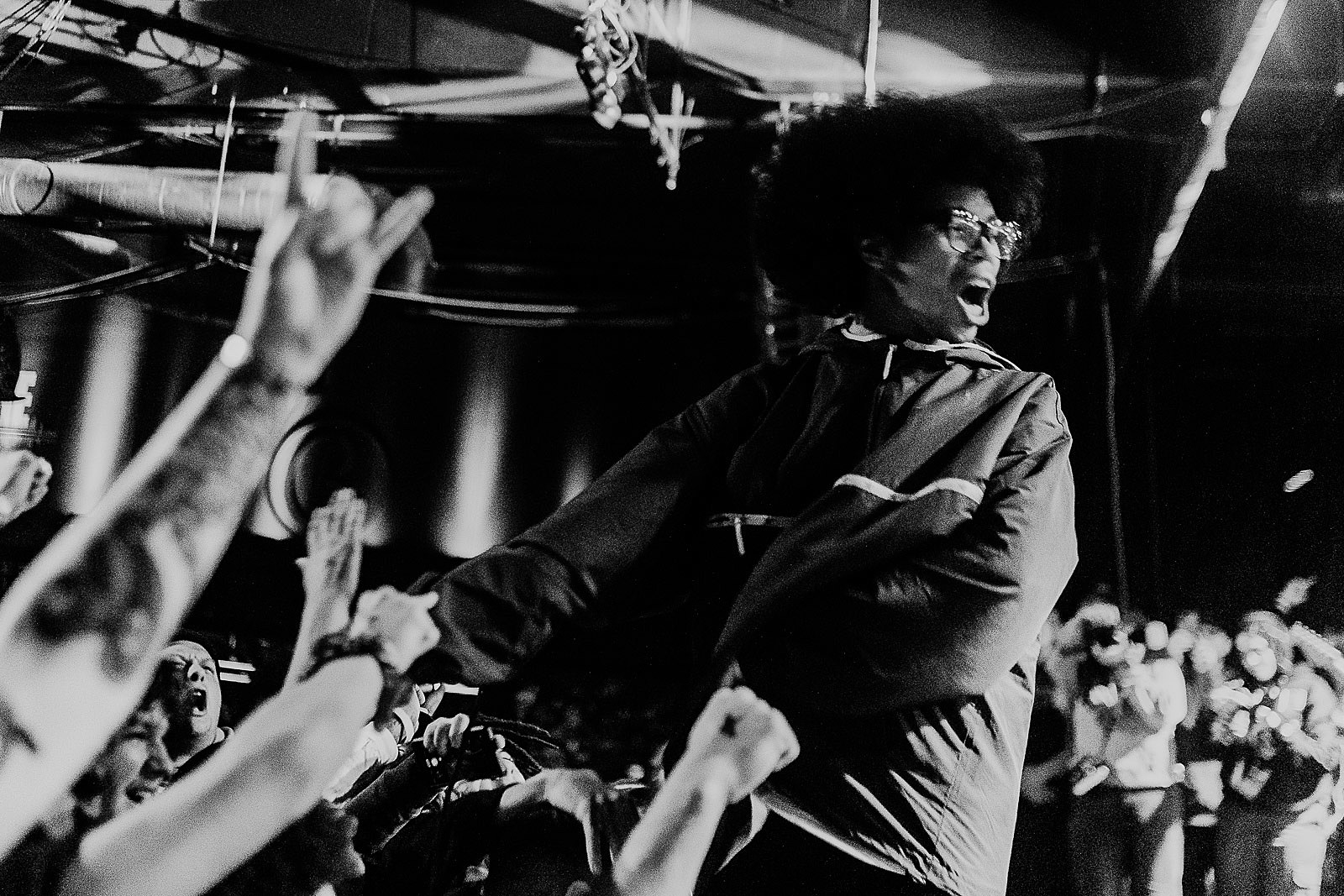
11 best Linkin Park songs
There has always been something deeply humanistic about Linkin Park. Across seven studio albums, the Agoura Hills-born band dragged forth very real, kinetic darkness, personal pain, and the uncovered raw, uncomfortable reality of depression — all while carving out an instinctual creative path for themselves that turned a boldly blind eye on what the “formula” for musical success might look like. Though they were lauded as nü-metal pioneers for their poignant fusion of metal and rap, Linkin Park seemed to always prioritize creative and personal growth over the stasis of what had been proven prosperous for them. Swinging project to project from metalcore and electronica to rock, hip-hop, and reggae, their pulsating, aggressive work took notes from Pantera as much as they did the Roots, each time assuming risk — and each time, coming out on top.
The band, who burst onto the scene — a scene still burgeoning, and lacking mainstream support — with the brash and brilliant Hybrid Theory, was instantly received with unexpected reverence by spanning audiences. Despite their lack of sugary sweetness, their charged, borderline cataclysmic tracks have since held court on the Top 100 charts for years on end, reached multiplatinum success, and cemented Linkin Park as one of the 21st century’s most celebrated outfits. Their sound, whether shaped by Mike Shinoda’s rap dipping its toe in a ska rhythm, or the late vocalist Chester Bennington diving in head first into a heavy-metal, unclean vocal hook, through time, and multiple albums, held onto one thing in particular — unbridled honesty and gut-wrenching introspection.
Read more: Every Linkin Park album ranked
Twenty-four years since their debut, Hybrid Theory, and in the wake of their massive sophomore album Meteora’s 20th anniversary last year, today Linkin Park are serving up something special — in the form of Papercuts. As their first-ever career-spanning greatest hits album, this compilation features a collection of generational anthems, alongside a cherished, unreleased track, “Friendly Fire,” recorded by the late Chester Bennington for One More Light in 2017. "The song is about looking into the distant past with a loved one, and realizing that sometimes best intentions can still cause hurt,” Shinoda says of the track. “It’s a loving and apologetic tone."
In reverence to the band, their legacy, and the new compilation — we’ve assembled our top 11 Linkin Park songs.
“In The End”
As legend has it, Bennington was neither initially confident in this track nor eager for it to make Hybrid Theory’s final cut. While the rest of the angst-fueled album will meet you nose-to-nose, spraying your face with spittle, “In The End” is melodic and slow-paced, leading the listener in by the hand through the instantly recognizable opening, a yearning piano riff that tumbles softly over Joe Hahn’s vinyl scratchwork. But despite any dubiousness, “In The End” was released as the massively affective album’s fourth single, and not only played pivotal role in introducing the band’s debut full-length, but would introduce the band’s future arc, and the vast, nonlinear scope of sound they encompass. Linkin Park, this song proclaims, aren’t about a formula, but rather the unbearable tension and weight that ties together the artists’ talent and their fearlessly honest, pain-steeped statement. This track unveils their ability to perfect subtlety, from its thoughtful sprinkling of texture with light glitching and scratching to the dreamy wall of guitar distortion and quiet, deliberate build of melodic vocals to Bennington’s soul-stirring full-tilt belt. The unforgettable hook, “I’ve put my trust in you/Pushed as far as I can go,” is one of the late vocalist’s rawest performances, playing in dense duality with Shinoda’s spilling of charged rap. As more proof of Linkin Park’s remarkable impact and legacy, the track — arguably completely a chart-unfriendly, morose nü-metal ballad — sat steadily on the Hot 100, and has since been classified as one of the era’s most iconic pop songs.
“Numb”
There are songs we all recognize from the first note — “Welcome to the Black Parade,” “Fatlip,” “Mr. Brightside…” In that category, “Numb” reigns supreme. Its keyboard refrain, like a glitching heartbeat, pulses through the track, as the massive, meaty cut builds around it. If anything better fits the group’s goal of creating an “epic and cinematic, powerful and dynamic” album with Meteora, it’s this song. It’d be easy to laud every title on this list as “one of Bennington’s best” because the vocalist truly gives himself entirely, body and spirit, to every performance — but what’s heartbreakingly beautiful about “Numb” is how Bennington lets us in, showing us just how honest his work really is. Despite how definitively cinematic the song succeeds in being, as it teeters ominously on the edge of its anthemic buildup, Bennington’s voice briefly cracks, as if bearing the true weight of its chorus. Soul-bearing, depression-saturated as the song stands to be, it continued to disprove the idea that melancholy music couldn’t break mainstream. Linkin Park’s “Numb” went multiplatinum, sitting atop the charts for over two years, and still holds the title of YouTube’s most-watched rock video.
“Papercut”
To fully understand Linkin Park, “Papercut” is pivotal. In the arc of what the band have done, the opening song on the band’s debut album can at first sound like a rougher cut, one where the web of widespread influences from rap to emo are almost too tangled. However, this track — one of Bennington’s favorites — also serves as an undiluted, unadulterated trailer for what the band would go on to do, in their own work and for alternative music as a whole. It showcases the raging authenticity of their lyricism, and the pugnacious, unrepeatable power that is the combined force of Shinoda and Bennington. With a hip-hop beat sliding into 4-bit alt-rock rambunctiousness, it gave us all a taste of the talent that would shift, grow, adapt, and stretch for years to come.
“Faint”
As with a few tracks on Meteora, this song finds that previously unheard of sweet spot between metalcore, rap, and dance music. It’s about head banging while tapping a foot to drum-and-bass beats. Showcasing a signature of LP at the time, the grunge-inspired quiet-loud effect, “Faint” is replete with a crescendo of electronics and a massive, breaking wave of heavy instrumentals, tied together by the unparalleled vocals, from Shinoda’s fiery, electrified rap verse to the hard-hitting shift between Bennington’s clean and unclean vocals. It is in this defining performance where we see them find a pure yin-yang balance, which has not only landed them on this list, but led the track to become a beloved MTV mashup with Britney Spears’ “Toxic,” and also appear as a remix on Collision Course, Linkin Park's 2004 collaboration project with Jay-Z.
“One Step Closer”
“Shut up when I’m talking to you!” could easily be found under the dictionary’s definition of nü metal. As Linkin Park’s debut single, “One Step Closer” was a battle cry for the youth generation, whose angst had outgrown eye-rolling their elders and found solace in liberty spikes and mosh pits. It’s Linkin Park embracing their own youth, clambering with tenacity and desperation to express themselves, leaning into the possibility that their message might upset or unsettle others. Regaling the lost souls in the circle pit with the decision to tune in an ominous, gothic drop-D, Bennington warns, “One step closer to the edge, and I'm about to break.” The track also serves up a hefty dose of satiating riffing, woven through with some of Hahn’s best scratching.
“Breaking the Habit”
Across the band’s entire discography, there’s tactile depth and weight, depression, and self-loathing in every facet, from the metronomic itch of vinyl scratching to the strained pitch of both vocalists as they surge with anguish. To that point, despite their debut’s success, Linkin Park got left out to dry by certain listeners. However, “Breaking the Habit,” Meteora’s final single, came as a twisted olive branch. For that reason, this song, and its significance as a sign of Linkin Park’s next era, would be remiss not to highlight. Built around a drum-and-bass beat, it leans into electronica influence and rounds out a shinier, more produced sound, unlike any other songs they’d previously put out. With no rap verse from Shinoda, and not a foot to be seen touching a distortion pedal, it’s got an inherently early aughts air to it. Though the nü-metal throughline has been left to the wayside, it’s what makes this song such a powerful demonstration of all that Linkin Park are in the preservation of their trademark urgency and near-combative intensity. And, of course, their mastery of translating the ouroboros of true melancholia into music.
“Bleed it Out”
Once described by Shinoda as “a fucking bizarre death-party-rap hoedown,” this is another track that is definitively Linkin Park in how un-Linkin Park it is. Whatever the level of consciousness was in doing so, this band threw us for a loop every time. Making use of unexpected and honestly unruly percussion, they bring out tambourine, incorporate lively handclaps, and leave in “audience” chatter. It’s an unhinged recipe that bears curiously addictive fruit — a Motown funk sound that’s topped with Brad Delson’s full-bodied, Edge-esque guitar part practically built for stadium settings, and tied together by Bennington’s tried-and-true unclean vocals. It’s certainly chaotic, but we’re deeming this one chaotic good.
“Somewhere I Belong”
Try not to headbang to this song, we dare you. You’ve got impeccable drum fills, chuggy, near-metallic guitar, and a delicious mic pass between Shinoda’s slow and steady rap and Bennington’s refrain “Nothing to lose” — not to mention the iconic Salvador Dali-inspired music video. That being said, there’s something especially bone-chilling about this track. As a follow-up to the multiplatinum success of Hybrid Theory, as the opener for the slightly refined, glossier Meteora, “Somewhere I Belong” seemed an intentional move, a proclamation to the public that, despite their commercial accolades, a sense of alienation, loneliness, and emptiness still beat strong as ever in the heart of Linkin Park. “Just stuck, hollow, and alone/And the fault is my own, and the fault is my own,” Shinoda spits, before Bennington belts out the hook, “I wanna heal, I wanna feel/What I thought was never real/I wanna let go of the pain I've felt so long/Erase all the pain till it's gone.” The two teeter back and forth on a beautiful see-saw of tear-stained lyrics, taking the track back to a quiet-loud dynamic, reinforcing in yet another, completely unique way, the vicious cycle of self-doubt that permeated these artists’ output.
“Waiting for the End”
At this point, we should know to leave our expectations at home when it comes to Linkin Park. However, this track off A Thousand Suns, their post-Meteora effort, shifts into new realms in still surprising ways. Thumping, clean synths pound against a lone piano note might lead us to believe this is just a more produced iteration of the Linkin Park we know, until Shinoda enters the chat, with a cadence to his flow that sees direct reggae influence. The mic gets passed to Bennington, and gears shift again — he’s back to pure melodies, but they’re polished, remixed and as he holds each long note, there’s a notable sense of hope in his voice. Perhaps it’s just the sparkly production, but where the catalog often focuses on the darkness, it’s worth holding a candle to this track, which seems to find some light.
“Crawling”
One of the first songs to propel the band into the mainstream, which continues to saturate KROQ’s radio waves, was first introduced as a single off Hybrid Theory. Though it provided ample room to understand the power of Bennington’s aggressive, monumental vocals, Shinoda’s rapping is less present on this track than others on the album. What makes this song especially stirring is how honest it is. Though all LP songs have a definite darkness to them, and no track is spared from tapping into very real demons, ”Crawling” digs its nails into Bennington’s tortured past, and unpacks the methamphetamine abuse that permeated his teenagehood. It’s a prime example of the band’s unique ability to release something so personal and so heavy, only to have it become an anthem for worldwide audiences — not to mention win a GRAMMY.
“What I’ve Done”
Produced by the legendary Rick Rubin, “What I’ve Done” was released as the lead single from Minutes to Midnight. From the start, as we’re eased in with a piano riff, they’re letting us know that nü metal has no place here. The band are laying it all bare, stripping down their sound, and gluing it back together with Rubin’s clean, sculptural production style. Rather than dancing in duality, Bennington’s vocals stand alone — decisions he explained to MTV by saying, "In a way, it’s us saying goodbye to how we used to be. The lyrics in the first verse are ‘In this farewell, there is no blood, there is no alibi,’ and right away, you’ll notice that the band sounds different…” Some may say this was the moment Linkin Park left metal behind, where Bennington put away the JNCO shorts for good, and moved into his Bono phase. But with the fluidity of genre, and the embracing of subgenre in today’s industry, perhaps we can imagine another side to the story — a band’s desire to grow beyond expectations, and shed the blueprint regardless of the risk.










